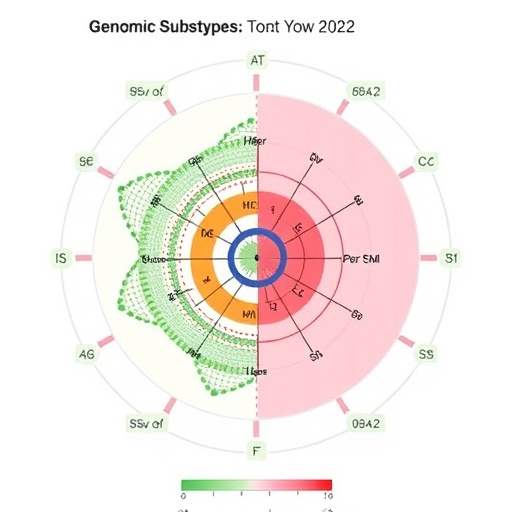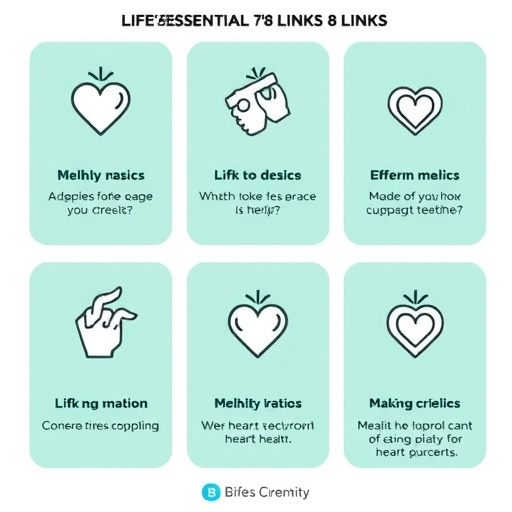Recent advancements in pediatric cardiology continue to illuminate the complex interplay between medical interventions and the physiological responses in infants. A groundbreaking study conducted by Dhamija et al. sheds new light on a crucial post-procedural phenomenon: serosal and soft tissue enhancement observed after cardiac catheterization in infants. This research not only documents the prevalence of these enhancements but also delves into the underlying factors that may contribute to them. The findings are significant, providing essential insights for pediatric radiologists and cardiologists who strive to optimize care for their young patients.
Cardiac catheterization is a common diagnostic and therapeutic procedure used in pediatric cardiology, particularly for infants with congenital heart defects. Despite its life-saving benefits, there remains a risk of complications following this invasive procedure. Serosal and soft tissue enhancement, which can manifest as increased visibility on imaging studies, is one such potential complication. Understanding the incidence and characteristics of these enhancements is crucial for improving patient outcomes and guiding clinical practices.
The study by Dhamija and colleagues utilized a comprehensive cohort of infants who underwent cardiac catheterization. Their work is exemplary in its methodical approach and meticulous attention to detail. By gathering a considerable amount of data from patients at various stages of recovery, the researchers aimed to identify not only how often these enhancements occur but also the specific circumstances and physiological traits that may influence their occurrence.
.adsslot_ruXWxvPTpy{width:728px !important;height:90px !important;}
@media(max-width:1199px){ .adsslot_ruXWxvPTpy{width:468px !important;height:60px !important;}
}
@media(max-width:767px){ .adsslot_ruXWxvPTpy{width:320px !important;height:50px !important;}
}
ADVERTISEMENT
Notably, the study recorded demographics such as age, weight, and underlying medical conditions of the participants, which may serve as critical factors in analyzing the incidence rates of enhancement. A comprehensive statistical analysis was employed to correlate these variables with the observed imaging outcomes. As the researchers sifted through the data, they presented convincing evidence that particular patient characteristics could predispose certain infants to experience serosal and soft tissue enhancement post-cardiac catheterization.
A pivotal aspect of this research is the elucidation of the physiological mechanisms behind the observed enhancements. The authors speculate that these changes may be tied to factors such as the technique employed during catheterization, the volume and type of contrast agents used, and the individual infant’s vascular response. For instance, an infusion of contrast agent can alter hemodynamics, causing transient changes in tissue perfusion and consequently enhancing visibility on imaging studies. This finding underscores the delicate balance required in the pediatric setting, where both safety and diagnostic clarity must be preserved.
The implications of this research extend beyond mere statistics. For healthcare providers, the knowledge of potential enhancements allows for more informed decisions regarding imaging and follow-up care. If certain infants are at higher risk for postoperative changes, more vigilant monitoring protocols can be implemented. This proactive approach has the potential to mitigate risks and enhance recovery protocols tailored to individual patient needs.
In addition to direct implications for clinical practice, the study’s findings contribute to the broader discourse surrounding pediatric cardiology and radiology. By investigating the nuances of how small bodies respond to invasive interventions, Dhamija et al. are paving the way for future inquiries into minimizing complications while maximizing the effectiveness of diagnostics and treatments. Their work serves as a reminder that continuous learning and adaptation in response to new findings are key to advancing pediatric care.
An intriguing element of the research is its call for further studies that can expand on these findings. The complexity of clinical presentations in infants necessitates a multipronged approach, where teams of cardiologists, surgeons, radiologists, and other allied healthcare professionals collaborate to build a unified understanding of the patient experience. Future research efforts may focus on identifying additional risk factors or developing new techniques to reduce the occurrence of serosal and soft tissue enhancements during cardiac procedures.
In light of these findings, pediatric healthcare teams are encouraged to engage in discussions and training sessions aimed at improving approaches to cardiac catheterization in infants. By fostering a culture of comprehensive knowledge-sharing and collaboration, the pediatric community can work toward ensuring safer and more effective care pathways for the vulnerable population of infants undergoing these procedures.
Ultimately, the study by Dhamija et al. stands as a significant contribution to pediatric research, highlighting the known yet often overlooked aspects of post-operative imaging in infants. The increased understanding of serosal and soft tissue enhancement introduces a new realm of considerations for both clinical practitioners and researchers alike. With ongoing studies in this field, practitioners are poised to not only enhance patient care but also elevate the standards of pediatric medicine as a whole.
The future of pediatric intervention rests not only on the procedures themselves but also on the nuanced understandings of their outcomes. Armed with the knowledge gleaned from such studies, healthcare providers can ensure that they stay at the forefront of innovative, evidence-based care, continuously improving the life trajectories of their young patients after cardiac catheterizations or other invasive procedures.
As the world of pediatric healthcare continues to evolve, rigorous research such as that of Dhamija et al. plays a fundamental role in steering the ship towards safer, more effective practices. As awareness grows and knowledge spreads, we may eventually see a substantial reduction in complications arising from critical interventions, paving the way for healthier futures for our children.
Subject of Research: Incidence and factors associated with serosal and soft tissue enhancement after cardiac catheterization in infants.
Article Title: Incidence and factors associated with serosal and soft tissue enhancement after cardiac catheterization in infants.
Article References: Dhamija, A., Wermers, J., Batlivala, S. et al. Incidence and factors associated with serosal and soft tissue enhancement after cardiac catheterization in infants. Pediatr Radiol (2025). https://doi.org/10.1007/s00247-025-06343-x
Image Credits: AI Generated
DOI: https://doi.org/10.1007/s00247-025-06343-x
Keywords: Pediatric cardiology, cardiac catheterization, serosal enhancement, soft tissue enhancement, imaging outcomes, congenital heart defects, postoperative complications.
Tags: children’s cardiac catheterizationcomplications after cardiac procedurescongenital heart defect interventionsDhamija study on cardiac outcomesimaging studies in pediatric cardiologyoptimizing pediatric patient carepediatric cardiology advancementspediatric radiology insightsphysiological responses in infants after catheterizationrisks of cardiac catheterizationserosal enhancement in infantssoft tissue enhancement post-procedure





